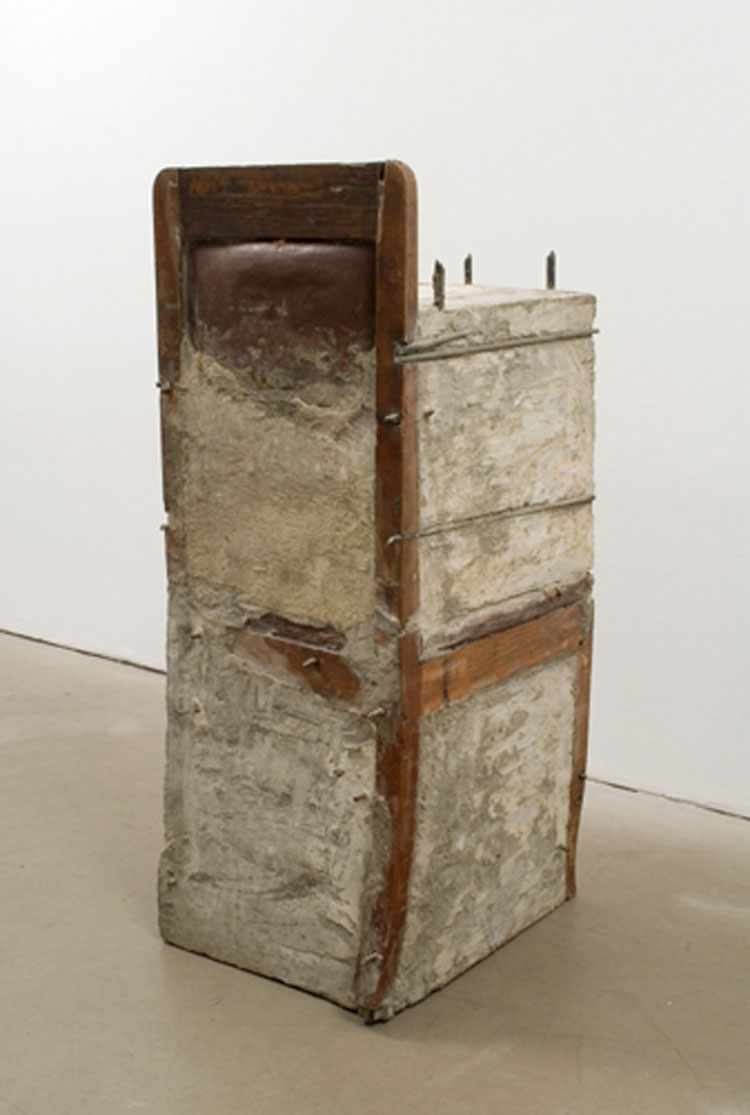
Doris Salcedo, Untitled, 1989. Wood, concrete, metal, and cloth, 38 1/2 x 16 3/4 x 17 3/4 inches (97.8 x 42.5 x 45.1 cm). Gift of Barbara Lee, The Barbara Lee Collection of Art by Women. Courtesy Alexander and Bonin. © Doris Salcedo
Since the mid-1980s, Colombian artist Doris Salcedo has addressed the themes of loss and mourning in works that evoke criminal and political violence. Her sculptures and installations are informed by her research and fieldwork in rural communities in Colombia, particularly the testimonies she collects from survivors of political abduction who were presumed dead, as well as the families of those who did not return. Her work both honors the memory of lives lost and contemplates the frequently unspoken results of trauma.
In 1989, Salcedo began to make works in which she buried, covered, brushed, and fused domestic wooden furniture with cement. By distorting the familiar, she transforms our perception of home from a place of comfort and safety to one of disorienting dislocation. In Untitled, a chair has been almost entirely encased in a block of cement, with only its wooden frame and hints of red cushion peeking through. Metal spikes pierce the object, acting as both a form of support and an instrument of violence. When pouring the cement, Salcedo took care to preserve its rough and haphazard surface. Combining the impenetrable materials of cement and metal and the humble delicacy of the chair, Salcedo creates a strong sense of physical tension. Typically, we arrange wooden chairs in relation to a table or desk, but here the sculpture faces the wall, and at an uncomfortably close distance. For Salcedo, the installation of the work is as important as the materials from which it is made. The placement of the chair suggests confinement and punishment, both for the viewer, who cannot neither sit down nor fully view the sculpture, and for an imaginary detainee undergoing interrogation.
This work adds to the ICA/Boston’s strong and ever-expanding collection of sculpture, and of works in all mediums by artists who explore the subjects of war and sociopolitical violence, including Kader Attia, Louise Bourgeois, Willie Doherty, Mona Hatoum, and Yasumasa Morimura.
2014.35